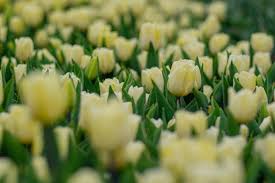Jewelry Styles in Royal Festivals: Symbolism and Elegance in Imperial China

Royal festivals in imperial China were some of the most splendid and significant events in the cultural and political calendar. They were occasions to showcase the wealth, power, and refinement of the imperial family, as well as to celebrate the harmony between the rulers and the heavens. During these grand celebrations, jewelry played a crucial role in the visual splendor and symbolic meaning of the events. The jewelry worn by the emperor, empress, and the royal family was more than just ornamental; it was a manifestation of divine authority, political status, and cultural traditions.
In this article, we will explore the various styles of jewelry worn during royal festivals in China, delving into the symbolism behind each piece, the materials used, and the role these adornments played in the rituals and ceremonies of the imperial court. We will also examine how jewelry evolved over different dynasties and how the royal family’s attire during these festivals reflected broader societal values and the connection to the cosmos.
1. The Role of Jewelry in Royal Festivals
Royal festivals in China were elaborate events held to mark significant occasions such as the emperor’s birthday, harvest celebrations, or the lunar new year. These festivals were not only a display of the emperor’s power but also a way to ensure prosperity, good fortune, and harmony within the empire. Jewelry, as a key element of the royal wardrobe, was meticulously chosen to align with the themes of these events. It was used to symbolize the emperor’s connection to the divine and his role as the protector of the realm.
Jewelry worn during royal festivals was often rich in symbolism. For example, certain gemstones were associated with different elements of nature, and their use in jewelry was believed to bring balance and harmony to the empire. The presence of dragon motifs or phoenix imagery was common, as these mythical creatures represented imperial authority and the mandate of heaven. In addition, the materials used in the jewelry were often rare and expensive, signifying the immense wealth and power of the ruling family.
2. The Early Dynasties: Simplicity and Spirituality
In the early dynasties, such as the Shang (c. 1600–1046 BCE) and Zhou (1046–256 BCE) dynasties, the jewelry worn during festivals was simple, yet spiritually significant. Jade was the most prominent material used in royal jewelry. The emperors and empresses would wear jade pendants, rings, and earrings during royal festivals, as jade was believed to have protective qualities and was associated with immortality and moral integrity.
The jewelry from these early periods was not just for ornamentation but had a ritualistic purpose. For example, jade bi disks were used during ceremonies to honor ancestors and the gods. These disks, often worn around the neck, symbolized the emperor’s connection to the divine and his responsibility to maintain harmony in the realm. The simplicity of the jewelry was meant to reflect the virtue and purity of the emperor, aligning with Confucian ideals of governance and moral leadership.
3. The Tang Dynasty: Extravagance and International Influence
The Tang Dynasty (618–907 CE) was a period of immense cultural exchange, and this influence is reflected in the royal jewelry worn during festivals. The Tang emperors and empresses were known for their opulent and extravagant jewelry, which was heavily influenced by trade along the Silk Road. This period saw the introduction of new gemstones, such as emeralds, turquoise, and rubies, as well as the incorporation of pearls from the Persian Gulf.
Jewelry in the Tang Dynasty was bold and extravagant. Empresses, in particular, wore golden diadems, necklaces, and earrings adorned with large gemstones. The jewelry was often designed to convey both power and beauty, with dragon and phoenix motifs being common. The dragon symbolized imperial authority, while the phoenix represented the empress’s connection to the heavenly mandate.
During the royal festivals, the Tang court would hold grand banquets and processions where the emperor and his consort would wear these impressive jewels as a display of their divine right to rule. The jewelry was also worn during religious ceremonies, where it was believed to aid in maintaining cosmic balance and protecting the emperor from evil forces.
4. The Song Dynasty: Subtle Elegance and Refined Craftsmanship
In contrast to the extravagance of the Tang Dynasty, the Song Dynasty (960–1279 CE) was characterized by a more refined and understated approach to jewelry. The Song emperors and empresses wore simpler, more elegant pieces made of jade, gold, and silver. These pieces were often smaller and more delicate, focusing on craftsmanship and subtle beauty rather than boldness and opulence.
During royal festivals, jewelry was worn to enhance the imperial attire, but it was not as ostentatious as in previous periods. Jade pendants, hairpins, and bracelets were common, with intricate designs reflecting natural elements like flowers, birds, and waves. The symbolism of these natural motifs was meant to evoke harmony with nature and the celestial order, which were central to the Confucian philosophy that guided the Song emperors’ rule.
The Song royal jewelry also reflected the dynasty’s cultural sophistication and appreciation for the arts. The use of fine enamelwork and carved jade demonstrated the high level of craftsmanship in the period. Empresses would wear headpieces and necklaces with intricate designs that incorporated these elements, creating a sense of grace and elegance during royal celebrations.
5. The Ming Dynasty: Symbolism and Power in Jewelry
The Ming Dynasty (1368–1644 CE) was a period of great stability and prosperity for China, and the jewelry worn during royal festivals was designed to reflect both the wealth of the empire and the emperor’s powerful position. The Ming emperors favored jewelry that was both luxurious and rich in symbolism. Gold and silver were often used to create elaborate crowns, necklaces, and bracelets, while jade remained a highly prized material.
The Ming royal family used jewelry to communicate their connection to both the divine and the historical traditions of their imperial ancestors. During festivals, the emperor and empress would wear golden crowns with intricate dragon and phoenix motifs, symbols of the emperor’s authority and the empress’s role as the embodiment of the imperial family’s power.
The use of pearls was also popular in Ming jewelry, as they were associated with purity and perfection. Pearls were often strung together to create elaborate necklaces or earrings, and their spherical shape symbolized unity and the cyclical nature of life.
6. The Qing Dynasty: Opulence and European Influence
The Qing Dynasty (1644–1912 CE) was the last imperial dynasty of China, and its royal jewelry reached new heights of opulence and extravagance. During royal festivals, the emperor, empress, and other members of the imperial family would wear jewelry that was often influenced by European styles. As China entered into trade relations with the West, precious gemstones like diamonds, rubies, and emeralds were incorporated into Chinese royal jewelry for the first time.
Qing royal jewelry was designed to reflect the emperor’s ultimate authority and connection to the heavens. The emperor’s crown would often feature dragon motifs, symbolizing the emperor’s direct connection to the divine, while the empress’s jewelry would often feature phoenix and pearl designs, representing harmony and prosperity. The jewelry was heavy, ornate, and made to impress, as it was intended to reflect the grandeur and power of the Qing court.
One of the most famous pieces of Qing jewelry is the imperial tiara worn by Empress Dowager Cixi, the de facto ruler of China during the late Qing period. The tiara, which is adorned with pearls, jade, and gold, is a prime example of the opulence that characterized Qing royal festivals.
7. Jewelry in Royal Festivals: Beyond Aesthetics
The role of jewelry in royal festivals was not simply about beauty or wealth. It was deeply tied to the cultural and spiritual fabric of the empire. Jewelry was seen as a means of protecting the emperor and his family, ensuring their connection to the divine and maintaining harmony in the empire.
During royal festivals, jewelry played an essential role in the rituals and ceremonies that took place. Pieces were worn to invoke good fortune, protect against evil spirits, and show reverence to the gods. Each gemstone, each symbol on the jewelry had its meaning, and the wearer’s ability to don such sacred pieces was a testament to their divine mandate.
8. Conclusion: The Legacy of Royal Jewelry in Chinese Festivals
Jewelry worn during royal festivals in imperial China was much more than a form of decoration. It was an expression of the emperor’s divine authority, a tool for maintaining cosmic harmony, and a symbol of the empire’s wealth and power. Over the centuries, the style of royal jewelry evolved, reflecting the changing tastes, influences, and cultural priorities of the various dynasties. Yet, one thing remained constant: jewelry was an indispensable part of the royal court’s grandeur, a crucial element in the celebrations that marked the most important occasions in China’s imperial history.
From the simple elegance of jade jewelry in the Zhou Dynasty to the opulent, gemstone-encrusted pieces of the Qing emperors, the role of jewelry in royal festivals offers us a fascinating glimpse into the richness of Chinese culture, symbolism, and history.









